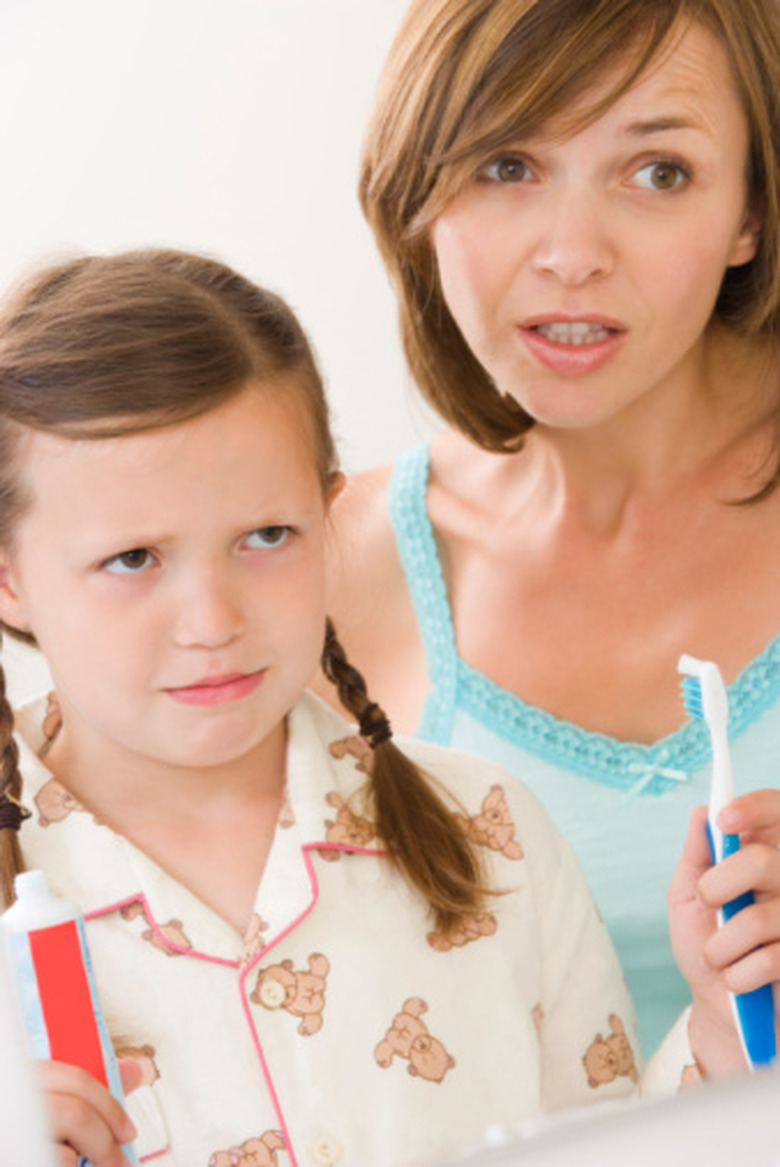Toothpaste Science Projects
Getting kids to brush their teeth is a common problem and source of frustration for most parents. Most kids would avoid the toothbrush completely if their parents didn't force the act of brushing upon them. Teaching kids the importance of brushing their teeth every day can stave off painful cavities, bad breath and other health problems such as gingivitis. Science projects can be a fun way to demonstrate in a hands-on way the importance of brushing every day.
The Science of Toothpaste
The Science of Toothpaste
The study of the components of toothpaste is in itself a science project. Chemists are constantly studying and changing the makeup of toothpaste. The base of most toothpastes is made with silica, sorbitol, polyethylene, glycol, sodium dodecyl sulphate, sodium carboxymethyl cellulose and water. Fluoride and flavor are also added to most toothpastes. Researching the contents of a toothpaste tube can be a great science project for a budding chemist.
Why Brush Teeth?
Why Brush Teeth?
This experiment teaches kids the importance of brushing their teeth. After we eat, a sticky coating called plaque forms on our teeth. If we don't brush off the plaque, it can change the color of our teeth from white to yellow or even brown. A buildup of plaque can also cause cavities. Using a hard-boiled egg with the shell peeled off as a pretend tooth, kids will learn the importance of brushing. Place the hard-boiled egg in an empty glass. Pour cola in the glass, completely submerging the egg. Let the egg soak in the soft drink overnight. The next day, remove the egg from the liquid and take note of the color of the egg. It should appear the same color as the cola. With a toothbrush and toothpaste, attempt to remove the stain from the egg's formerly white surface. It will be difficult to return the egg to its original brilliant white. If you repeat this experiment over several days using the same egg, it will become more and more difficult to brush off the brown color, and the egg will become permanently stained.
Which Toothpaste Makes Teeth Whitest?
Which Toothpaste Makes Teeth Whitest?
In various cups, pour a different liquid drink such as Kool-Aid, cola and coffee. Place an egg in each liquid-filled cup. Wait about 30 minutes to an hour. When you pull out the egg it will appear to be about the same color as the liquid. Using a toothbrush, scrub a small spot on each egg using different brands of toothpastes on each egg. Record how white each spot becomes. This is a fun way to test different toothpastes and visually demonstrate to kids what can happen to their teeth if they don't brush them.
Make Your Own Toothpaste
Make Your Own Toothpaste
Grind up some antacid tablets into a fine powder. You will need approximately 1/2 tsp. powder. Place the powder into a plastic cup and add 1/4 tsp. baking soda. Add two or three drops of water until the powder turns into a paste. Congratulations – you have made your own toothpaste. Toothpaste is made up of fine material called abrasive that grinds and pushes deposits of plaque and tartar off teeth. Some toothpastes contain fluoride, which helps prevent cavities from forming. The simple toothpaste in this experiment uses calcium carbonate (from the antacid) as the abrasive and baking soda to remove stains and reduce mouth acids. It might not taste minty fresh like your store-bought toothpaste, but it will do the cleaning job.
Cite This Article
MLA
Evans, Lisa. "Toothpaste Science Projects" sciencing.com, https://www.sciencing.com/toothpaste-science-projects-7999053/. 24 April 2017.
APA
Evans, Lisa. (2017, April 24). Toothpaste Science Projects. sciencing.com. Retrieved from https://www.sciencing.com/toothpaste-science-projects-7999053/
Chicago
Evans, Lisa. Toothpaste Science Projects last modified August 30, 2022. https://www.sciencing.com/toothpaste-science-projects-7999053/
